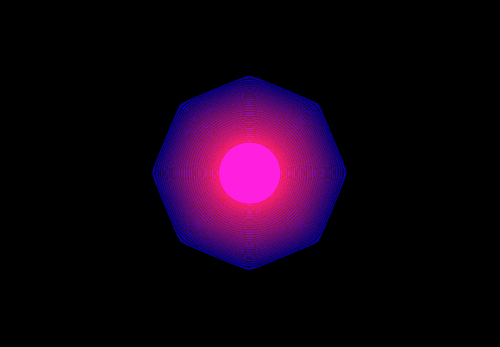The first piece of NFT art ever made

Despite what many media outlets would have you believe, NFT art did not start with the Bored Ape Yacht Club. It didn’t start with CryptoPunks either. So what was the first NFT and who created it? Ultimately, this unique honor goes to Quantum, a generative artwork created by digital artist Jennifer McCoy and then transformed into an NFT by her husband, Kevin McCoy, in 2014.
And the reason why he imprinted this particular work of art? It’s really quite simple. He did it for ownership.
The birth of NFTs
After his wife created Quantum, McCoy wanted to develop a way to sell the piece in its digital form. The problem? He did not have a way to determine the provenance of a digital artwork.
For the uninitiated, “provenance” is the documentation that authenticates the creator, ownership history, and appraisal value of a particular work of art. Unfortunately, provenance documents for digital art did not exist. After pondering his options, McCoy teamed up with the tech entrepreneur Anil Dash to solve the problem. Eventually, the duo began exploring blockchain technology to see if it could provide a viable way forward.
Back in the early 2010s, blockchain technology was still a thing very niche field. Bitcoin was only valued at $630 at the time, Ethereum had only just launched, and coin creators regularly overpromised, underdelivered and were sued into oblivion. But McCoy and Dash were not dissuaded, and the decision paid off – to put it mildly.

As it is widely known, blockchain technology contains several properties that help to buy and sell digital art. With blockchain technology, individuals have a trustless way to identify the creator and trace the ownership history of any item on a blockchain. This served McCoy and Dash’s purposes perfectly, and McCoy registered Quantum on the blockchain. “I had an idea to use blockchain technology to create indelible provenance and ownership of digital images of this type. Quantum was the first ever recorded in this way,” McCoy later said.
Shortly after the initial minting, McCoy and Dash demonstrated how “monetized graphics” could work during a live presentation for the Seven on Seven conferences. During the presentation, McCoy sold a digital image to Dash for $4 using blockchain. And with that, McCoy and Dash unwittingly set the stage for what would grow into a multi-billion dollar market less than a decade later.
Quantum rediscovery and controversy
Unfortunately, Quantum was forgotten after the mint in 2014. This was largely due to its original home on Namecoin, a pre-Ethereum Bitcoin offshoot. Specifically, Quantum resided on Namecoin Block 174923, and that’s where it stayed for years – until the NFT bull market of 2021.
When NFTs started gaining mainstream attention and selling for millions of dollars apiece in 2021, McCoy realized he might be sitting on a golden egg. As a result, he began promoting Quantum, approaching media such as Axios to discuss his work and its role in NFT’s history. Thanks in large part to this publicity push, the Quantum eventually went to auction at Sotheby’s.
In June 2021, it sold for more than one million dollars at auction. The winning bidder was silly tuna, an anonymous NFT collector. But there were problems.
Shortly after the million sale, experts noted that a specific quirk about Namecoin called into question WHO exactly owned by Quantum at the time of the sale.
As explained by Ledger Insights, Namecoin requires users to renew what is minted on the Namecoin blockchain every 250 days to retain ownership of the digital object. Notably, McCoy never renewed Quantum. This allowed an entirely separate entity – veteran collector EarlyNFT – to acquire ownership rights to Quantum ahead of the Sotheby’s auction. In an ironic twist, EarlyNFT secured these rights just a day after the piece on Quantum was published on Axios.
Ultimately, EarlyNFT contested the validity of the sale through a lawsuit.
Who won? At the time of writing, the Sotheby’s sale is still standing, and sillytuna still owns the piece. However, that could change, as the full court case is still pending.
While it is unfortunate that this uncovered piece of NFT history drummed up a fair amount of controversy to go along with it, it is better for the NFT community to know about Quantum’s existence and history. First movers often set a precedent for those who follow – and given the extreme ups and downs we’ve already seen in the NFT space, it looks like Quantum did just that.

























